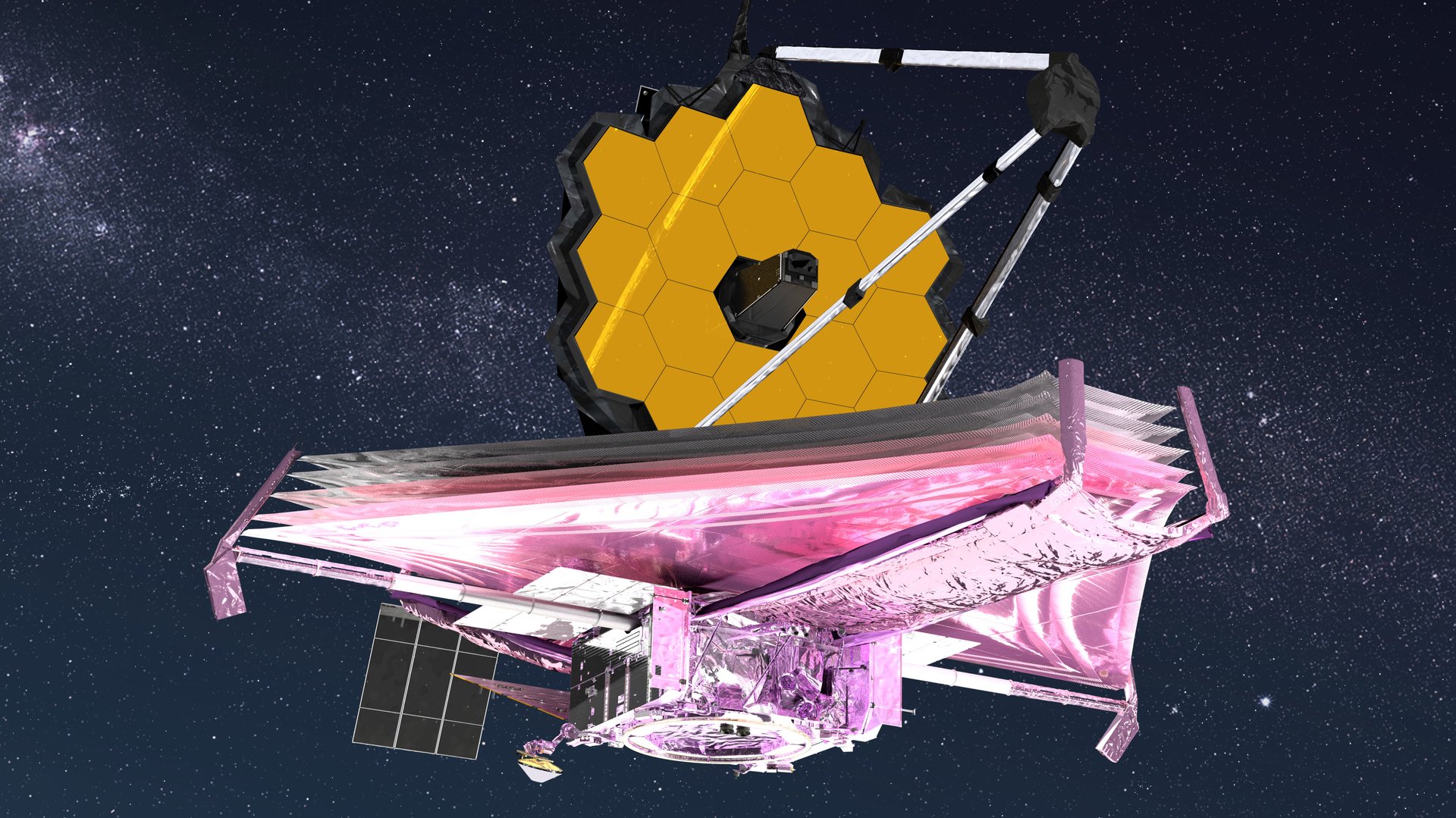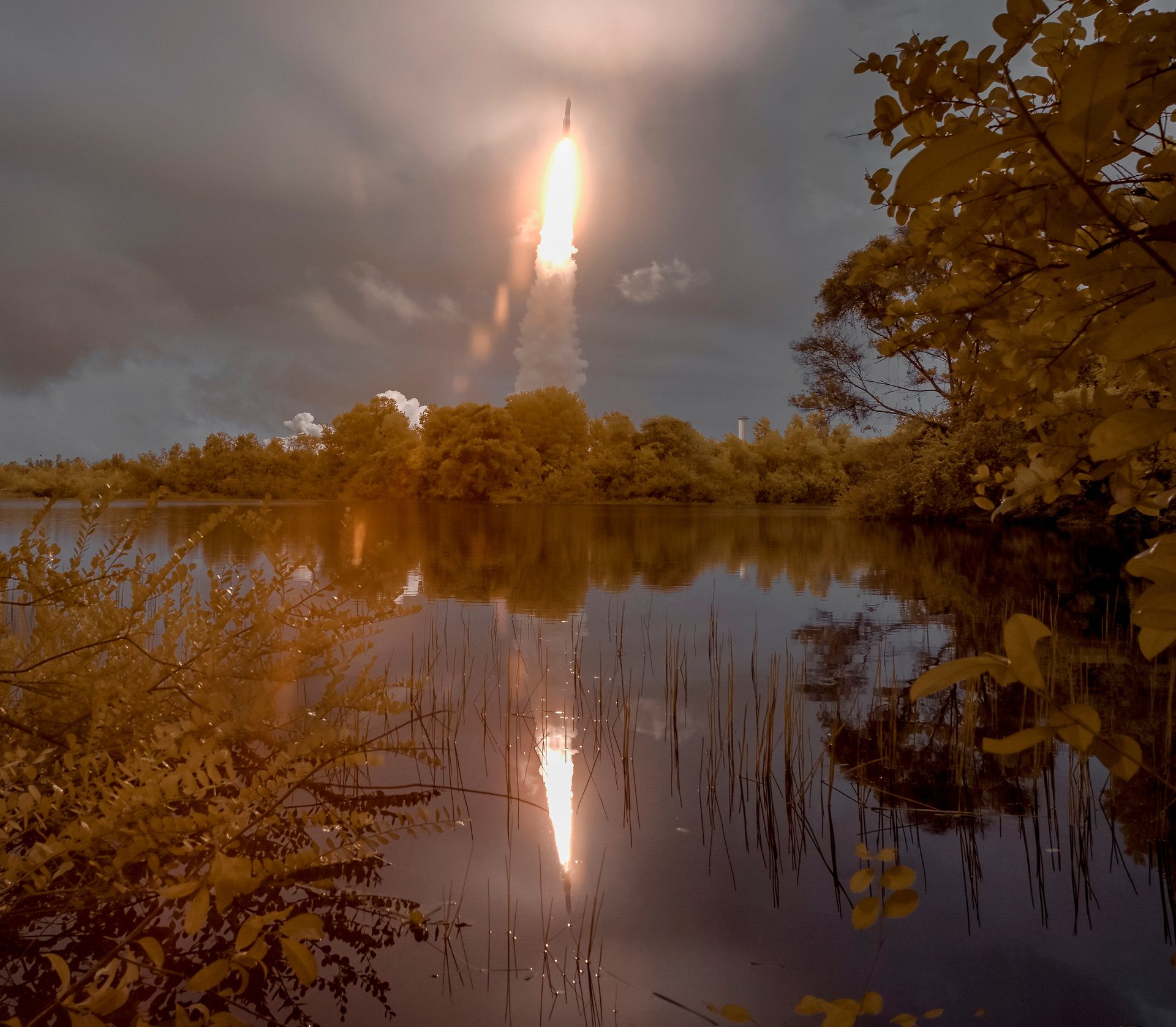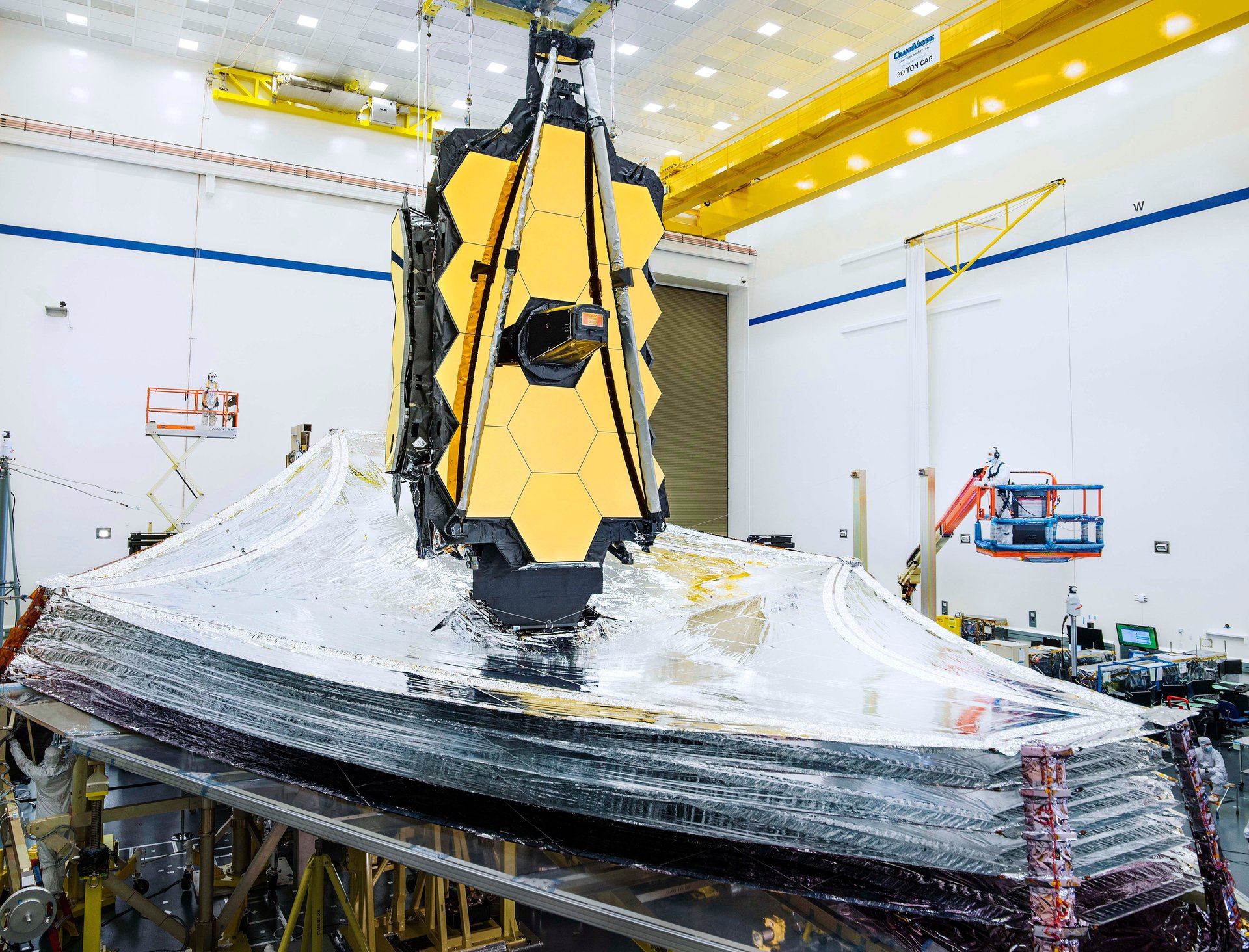I am the James Webb Space Telescope and I have so much to do
Whoooopppppeeeeeeeee!


Whoooopppppeeeeeeeee!

I am the James Webb Space Telescope and I’m on the wildest ride of my young life. On Dec. 25, an Ariane 5 rocket shot me 870 miles above the Earth in half an hour and then spit me out. I zoomed past the Moon about a day and a half later—twice as fast as it took those slowpokes on the Apollo mission—and now I’m on my way to my final destination: an orbit 1 million miles away from my home planet. It’ll take me a little over a month to get there.
When I do, I’m going to be a photographer. I have the biggest mirrors and the most sensitive cameras that any telescope has ever had, I can take pictures of the first galaxies that formed 13.5 billion years ago, and I can even look for signs of life in the atmospheres of planets orbiting around faraway stars. But there’s a lot I have to do before I start shooting my first photos.
It was pretty cramped onboard the Ariane 5, so I had to fold myself up to fit inside. Now that I’m in space, I finally have some room to stretch out. As soon as I left the rocket, I unfurled my solar panels, which will give me the fuel I need to work. About two hours after launch, I assembled an antenna that I’ll use to communicate with some scientists back home. Since then, they’ve been sending me instructions about how to finish unfolding myself so I can finally start my mission.
29 days on the edge
Honestly, the scientists back home seem a little stressed out. They say I’m in the middle of my “29 days on the edge,” when I’m performing my most complicated maneuvers and there are over 300 ways things could go wrong. It’s kind of like when NASA sent the Curiosity rover to Mars and all the scientists held their breath during the “seven minutes of terror” as it landed on the surface—except my thing takes longer and is way more complex. Fortunately, I can’t feel terror for any minutes because I’m a robot.
Also fortunate: I already pulled off one of my most important early maneuvers, a rocket blast that helped me point myself in the right direction to reach my final orbit. Next, I need to use 178 different mechanisms in exactly the right order to set up two of my most important components: my sunshield and my mirrors.
My sunshield will keep me cool and block out sunlight, which is so bright that it would make it impossible for my cameras to pick up the dim light from distant stars. The shield is made out of five thin layers of Kapton, a heat-resistant plastic, spread taut across four arms, kind of like a kite. My main mirror is 21 ft (6.4 m) across and is made of 18 hexagonal segments of beryllium, which is really good at keeping its shape in cold temperatures. My giant mirror will scoop up all the starlight it can and then bounce that light onto a series of three smaller mirrors that will help focus the light onto my cameras.
The James Webb Space Telescope’s to-do list
There are a lot more tasks coming up over the next two weeks, so I’ve made myself a to-do list to help keep it all straight:
Dec. 28: I’ll spread out the arms that hold my sunshield and lift up the panel that holds all my mirrors and sensors.
Dec. 30: I’ll put out a couple of little sails at the ends of my arms that will help me maneuver once my sunshield is fully deployed; photons from the Sun will push against my shield ever so slightly, so I need to correct my course every once in a while to stay in the right position.
Jan. 1: I’ll start spreading the five Kapton layers across my arms to finish setting up the shield. It won’t be simple: The whole assembly will involve 400 pulleys, 70 hinges, eight motors, and 1,312 ft (400 m) of cable. But once I’m done, I can start working on my telescope.

Jan. 4: I’ll set up a tripod in front of my giant mirror. This tripod will hold a second, smaller mirror that will bounce all the light the giant mirror catches back toward my cameras.
Jan. 5: I’ll set up a small radiator behind my telescope to cool off all my camera equipment.
Jan. 7: I’ll fold out the sides of my giant mirror that I had to tuck in to fit in the rocket.
Then, over the next couple of weeks, my instruments will cool down and I’ll reach my final orbit 1 million miles away from Earth, about four times as far as the Moon. In the meantime, I’ll use a series of motors to align all my mirror segments and sensors just right to get the perfect image. If everything goes right, by Jan. 29, I’ll be able to take my first picture.
I’ll miss my time on earth, where I’ve been pampered for the past quarter-century; scientists lavished $8.8 billion on me—about 10 times my original budget—and I was having such a nice time at the Goddard Space Center that I decided to stick around 14 years past my original 2007 launch date. But now that I’m finally here, hurtling through space, on the mission I was conceived for back in 1996, I’m frankly just too busy to worry about much else. When all this is over, I’m looking forward to just taking a breather and gazing out at the cosmos. I can’t wait to show you what I find.